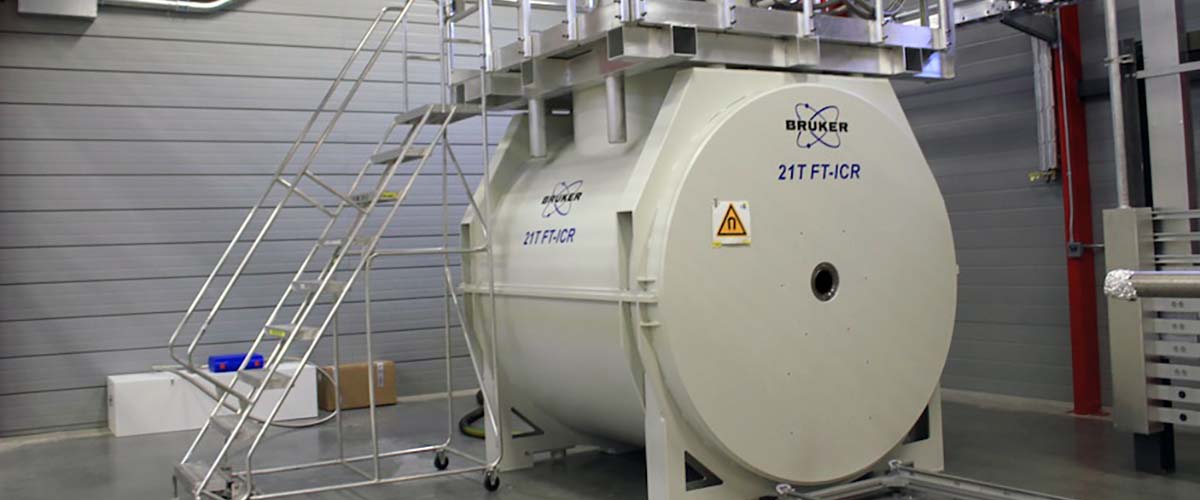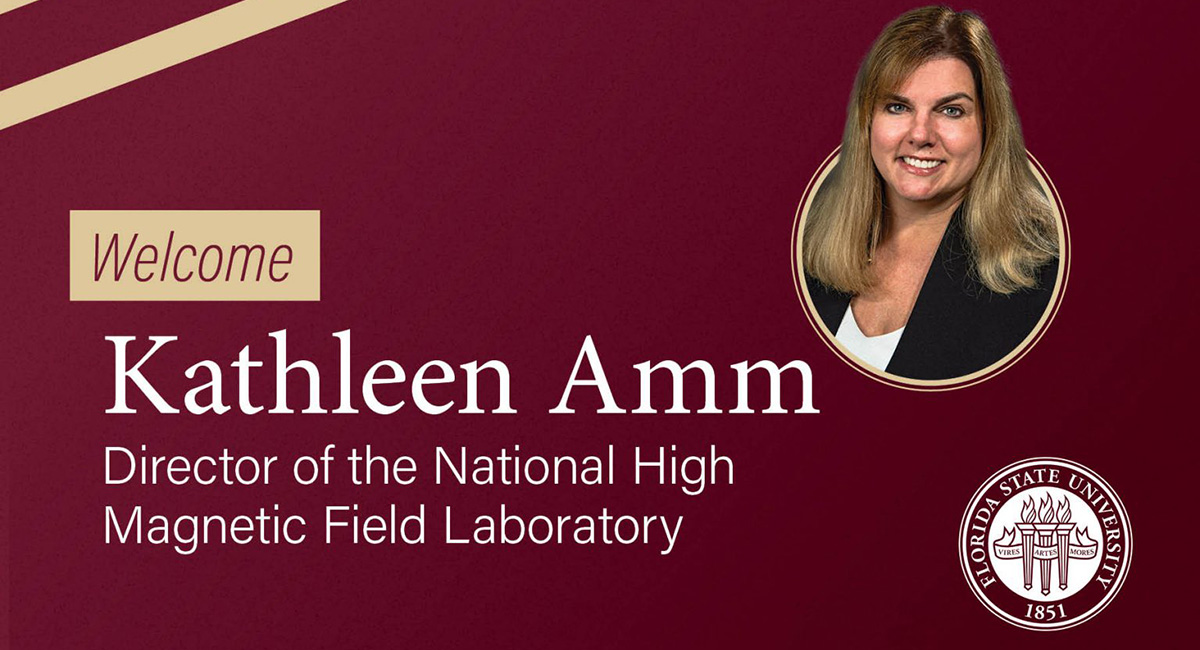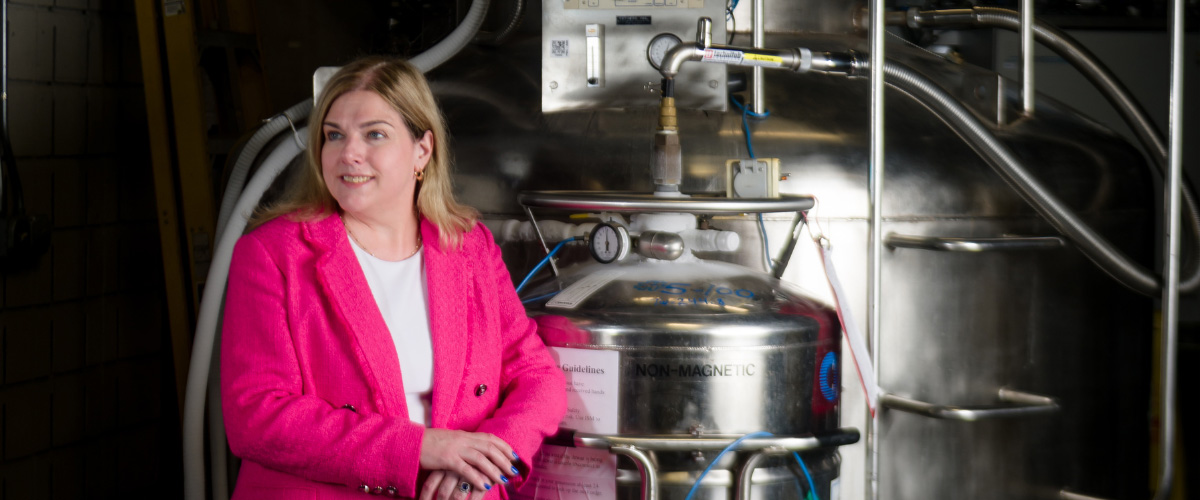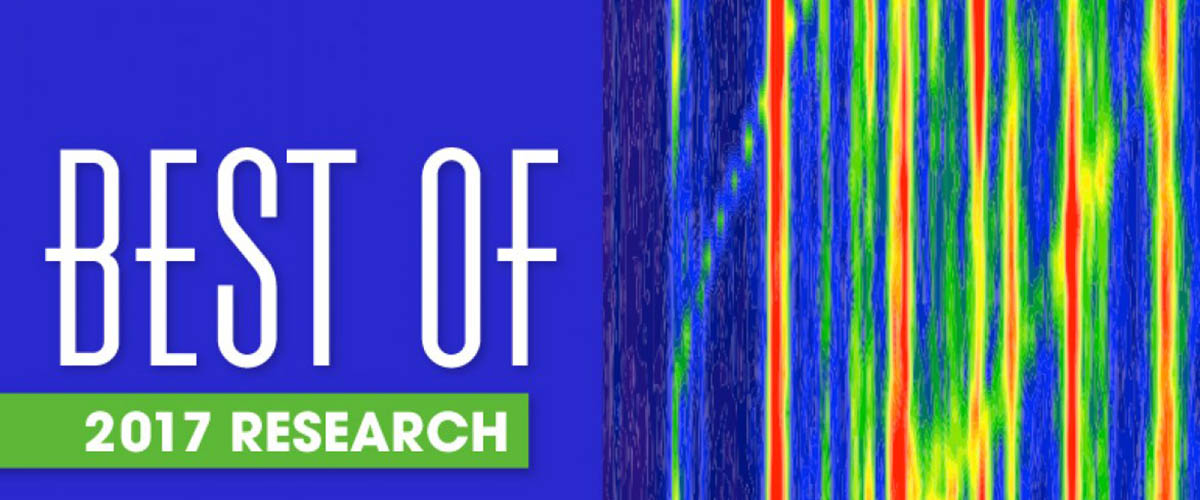Contact: Kristin Roberts
TALLAHASSEE, Fla. — The National High Magnetic Field Laboratory at Florida State University and the Bruker Corporation have successfully installed the world's first 21 tesla magnet for Fourier Transform Ion Cyclotron Resonance (FT-ICR) mass spectrometry. This new tool represents the world's highest field, persistent, superconducting magnet suitable for FT-ICR mass spectrometry.
Bruker, in collaboration with MagLab scientists, designed and built the 21 T magnet, which will be used in the lab's FT-ICR program in a project funded by the National Science Foundation. The 21 T will make cutting edge FT-ICR technologies available to a larger community of scientists.
"We are delighted to report that the 21 T Bruker magnet is at full field," said Alan Marshall, the MagLab's director of the High Field FT-ICR program and FSU's Robert O. Lawton Professor of Chemistry and Biochemistry. "The other subsystems of the 21 T FT-ICR mass spectrometer have been designed and are currently being assembled, for availability targeted for the early fall of 2014."
FT-ICR is by far the highest resolution mass spectrometry technique available and is useful in the analysis of extremely complex mixtures, including applications in petroleomics, dissolved organic matter, metabolomics, top-down proteomics, and matrix-assisted laser desorption/ionization imaging. The performance of FT-ICR systems improves with increasing magnetic field, and the 21 T magnet is expected to enable further dramatic improvements in mass resolution, mass accuracy and dynamic range compared to the previous highest field of 15 T.
The MagLab's ICR Program is a world leader in instrument and technique development, as well as in pursuing novel applications of FT-ICR mass spectrometry, and the 21 T will allow scientists significantly greater insight into materials. Said Professor Marshall: "Three primary science drivers for this instrument are: (a) faster throughput without loss of mass resolution for top-down proteomics; (b) extension of the size and complexity of protein complexes whose contact surfaces are mapped by solution-phase hydrogen/deuterium exchange, and (c) improved mass resolution and dynamic range for characterizing compositionally complex organic mixtures (petroleum, dissolved organic matter, metabolome). The higher magnetic field should result in dramatic improvement (by factors of 40-100%) in FT-ICR MS figures of merit, including mass resolution and resolving power, mass accuracy, dynamic range, and data acquisition speed."
The 21 T magnet design offers a 110-mm room temperature horizontal bore, with fringe field profiles and room temperature bore access optimized for FT-ICR MS. It includes many design features pioneered by Bruker, including operation at ~2 Kelvin by use of Bruker's unique UltraStabilized™ sub-cooling technology, the UltraShield™ technology to reduce stray fields, as well as novel active magnet refrigeration technology that virtually eliminates cryogen refills and user maintenance of the magnet. In addition to FTMS, the 21 T magnet is also suitable for ultra-high field preclinical MRI for highest sensitivity and resolution in mouse neuroimaging.
Dr. Gerhard Roth, the Bruker Ultra-High Field Magnet Manager, said: "The 21 T FT-ICR magnet is based on the wealth of experience gathered in ultra-high field magnet technology for NMR and for MRI magnets. Bruker is extremely pleased to supply this cutting-edge 21 T magnet to enable new scientific research directions in ultra-high field FT-ICR mass spectrometry."






